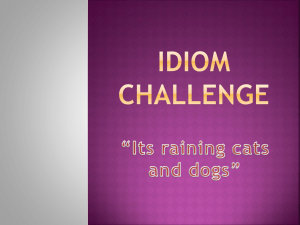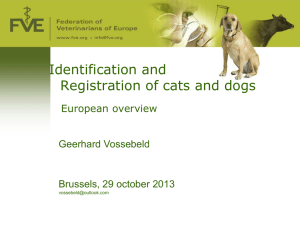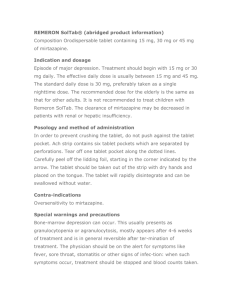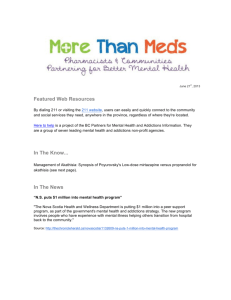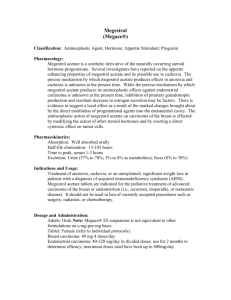DRUGS USED FOR APPETITE STIMULATION
advertisement
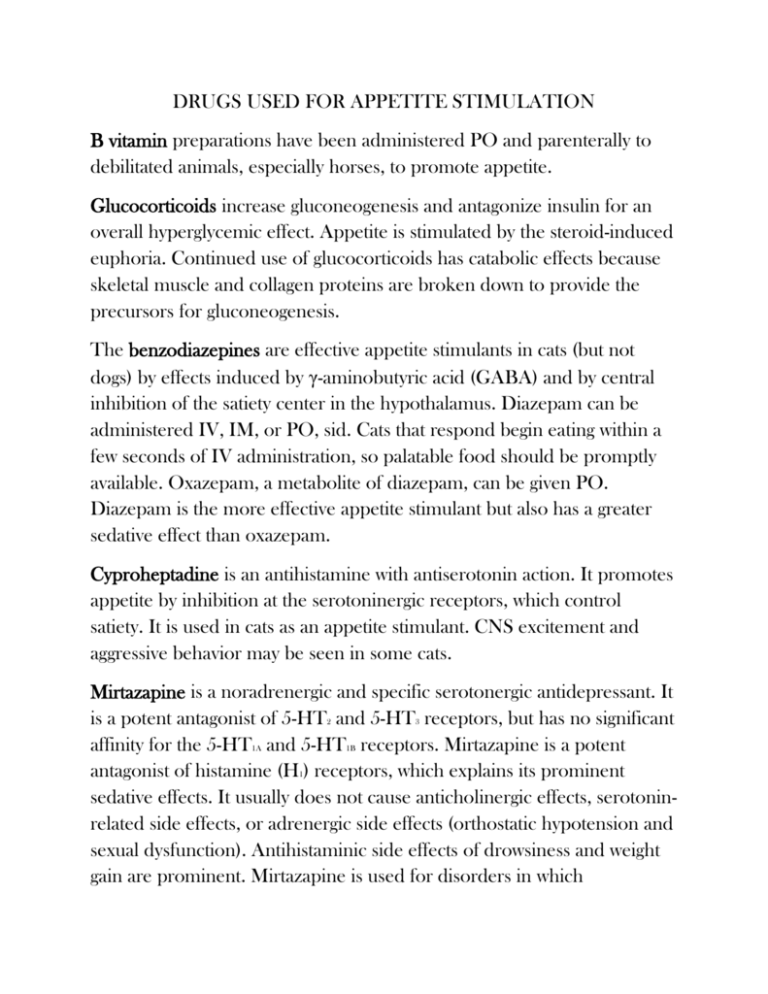
DRUGS USED FOR APPETITE STIMULATION B vitamin preparations have been administered PO and parenterally to debilitated animals, especially horses, to promote appetite. Glucocorticoids increase gluconeogenesis and antagonize insulin for an overall hyperglycemic effect. Appetite is stimulated by the steroid-induced euphoria. Continued use of glucocorticoids has catabolic effects because skeletal muscle and collagen proteins are broken down to provide the precursors for gluconeogenesis. The benzodiazepines are effective appetite stimulants in cats (but not dogs) by effects induced by γ-aminobutyric acid (GABA) and by central inhibition of the satiety center in the hypothalamus. Diazepam can be administered IV, IM, or PO, sid. Cats that respond begin eating within a few seconds of IV administration, so palatable food should be promptly available. Oxazepam, a metabolite of diazepam, can be given PO. Diazepam is the more effective appetite stimulant but also has a greater sedative effect than oxazepam. Cyproheptadine is an antihistamine with antiserotonin action. It promotes appetite by inhibition at the serotoninergic receptors, which control satiety. It is used in cats as an appetite stimulant. CNS excitement and aggressive behavior may be seen in some cats. Mirtazapine is a noradrenergic and specific serotonergic antidepressant. It is a potent antagonist of 5-HT2 and 5-HT3 receptors, but has no significant affinity for the 5-HT1A and 5-HT1B receptors. Mirtazapine is a potent antagonist of histamine (H1) receptors, which explains its prominent sedative effects. It usually does not cause anticholinergic effects, serotoninrelated side effects, or adrenergic side effects (orthostatic hypotension and sexual dysfunction). Antihistaminic side effects of drowsiness and weight gain are prominent. Mirtazapine is used for disorders in which inappetence and nausea go together, such as intestinal and gastric disease, liver or kidney disease, or any other condition involving both nausea and appetite loss. Mirtazapine can also be used to treat the nausea and appetite loss caused by chemotherapy. In dogs, mirtazapine is typically given once a day, while cats are given mirtazapine twice a week. It should be used with caution in dogs and cats with severe liver or kidney disease, as mirtazapine clearance will be reduced. In cats and small dogs, it is difficult to reduce the dose as the smallest tablet manufactured cannot be accurately cut much smaller than the regular dosing schedule allows. Megestrol acetate is a synthetic progestin. It has significant antiestrogen and glucocorticoid activity, with resulting adrenal suppression. It is used to stimulate appetite and promote weight gain in people with cancer and cachexia (related to acquired immunodeficiency syndrome) and may have a similar effect in anorectic cats and dogs. Megestrol acetate is contraindicated in pregnant animals and in animals with uterine disease, diabetes mellitus, or mammary neoplasia. In cats, megestrol acetate can induce a profound adrenocortical suppression, adrenal atrophy, and diabetes mellitus, which may or may not be reversible.



